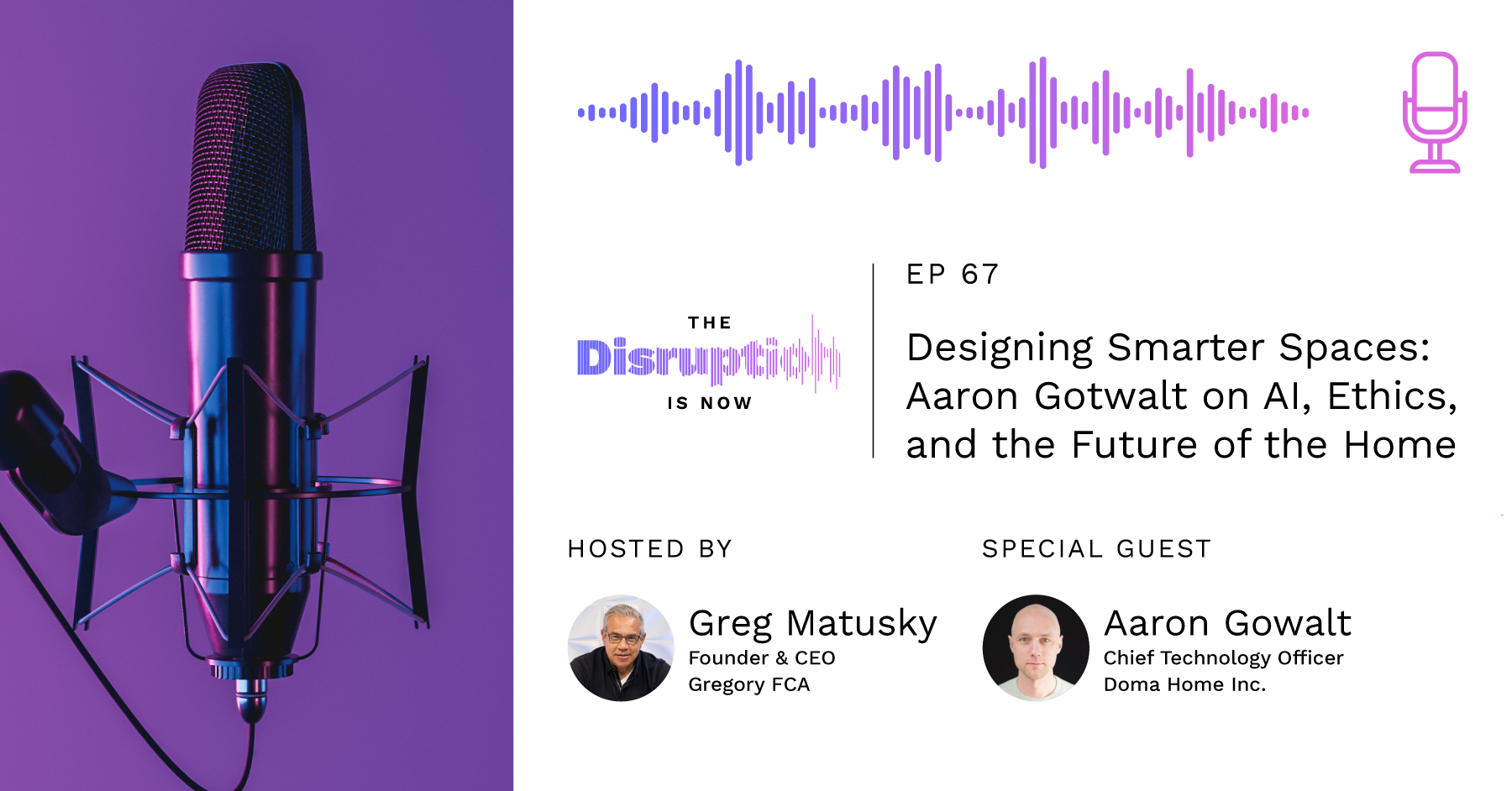Your car can drive itself and your phone finishes your sentences, but your “smart” home still can’t figure out when to turn on the lights. Everyone’s talking about AI changing industries, but there’s one place it hasn’t really landed yet: your house.
In this episode of The Disruption Is Now, Greg Matusky sits down with Aaron Gotwalt, cofounder of the smart home startup DOMA, to explore why the home is so far behind and what the next version of AI-powered living might look like.
There won’t be robot butlers, but a system of predictive and personal improvements will save energy, support habits, and make it feel more like home. From supporting morning rituals to vacuuming only the rooms that need it, Gotwalt lays out a vision of AI in the home that’s based more on intuition than human instruction — and why most of today’s systems don’t get us anywhere close.
Watch now:
Key takeaways
Your “smart home” still needs you to be the smart one
Gotwalt calls out current smart home setups for being little more than a glorified light timer. Despite smart locks, cameras, and light bulbs, most homes require human effort to set up and manage. Devices don’t coordinate well, and most require technical know-how to make them truly useful.
The promise of the smart home remains just that: a promise. True intelligence, he says, starts with systems that automatically understand and respond to your behavior without human micromanagement.
The tech isn’t the problem — it’s the interoperability
The biggest obstacle to smarter homes is a lack of shared language. Different brands operate in silos and don’t talk to each other, leaving humans to manage them separately.
Gotwalt points to the MATTER standard, backed by Apple, Google, and others, as a breakthrough that might finally unify the fractured smart home experience. Until then, consumers are trapped in vendor ecosystems, unable to mix and match devices, and “smart” still mostly means “frustrating.”
The AI-powered home of the future will anticipate, not react
Forget voice commands and apps. Gotwalt envisions a future where your home simply knows what you want, like lights gradually turning on as you enter the room or temperatures adjusting based on your habits.
It starts with tracking patterns over time, like your daily coffee routine or reading habits. Once those behaviors are understood, AI can start making proactive decisions.
DOMA is starting small, focusing on the entryway — a surprisingly complex space full of rituals, guests, deliveries, and departures — to prove out that kind of contextual intelligence.
Privacy concerns won’t stop smart homes, but value will determine the tradeoff
Privacy concerns remain a sticking point. DOMA’s early prototypes with interior-facing cameras raised eyebrows, even as they delivered powerful insights.
Gotwalt believes users will accept smart systems watching them if — and only if — they deliver enough value to make the decision easy.
He compares it to early resistance to digital photos online: once people saw the value, the hesitation vanished. If a system saves time, eliminates friction, or solves a real annoyance (like Greg’s wish to remember what tools are in his garage), people will find that tradeoff worthwhile.
DOMA’s strategy includes keeping processing local, on edge devices, so data doesn’t leave the home unless explicitly allowed by the user.
The future of smart homes runs on local AI
The need for local AI isn’t just about privacy. Processing behaviors and triggering actions require a responsiveness that isn’t possible sending data offsite to the cloud, which can also be costly. That makes small, fast AI models essential to running smart homes.
Gotwalt notes that with advances in compact models and lower energy requirements, even sophisticated systems like DOMA can run powerful AI on affordable hardware.
Key Moments
- What counts as a smart home today and why it’s disappointing (1:29)
- The role of MATTER in breaking device silos (2:38)
- Gotwalt’s vision of an AI that actually understands your habits (4:17)
- Why DOMA is starting with smarter entryways, not whole-home AI (6:25)
- Gotwalt’s journey from telehealth to smart homes, sparked by pandemic tinkering (7:55)
- Why luxury technology is invisible (9:52)
- Greg’s dream AI-powered smart home features (10:52)
- The privacy tradeoff and the promise of local AI (13:31)
- The economics of building affordable, sustainable, smart infrastructure (20:52)



